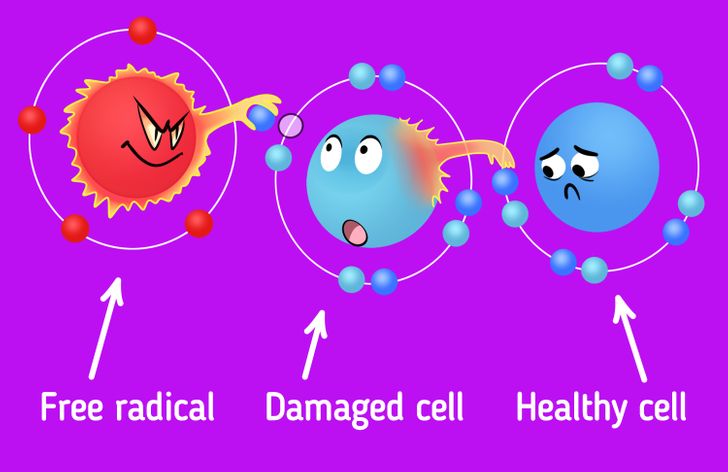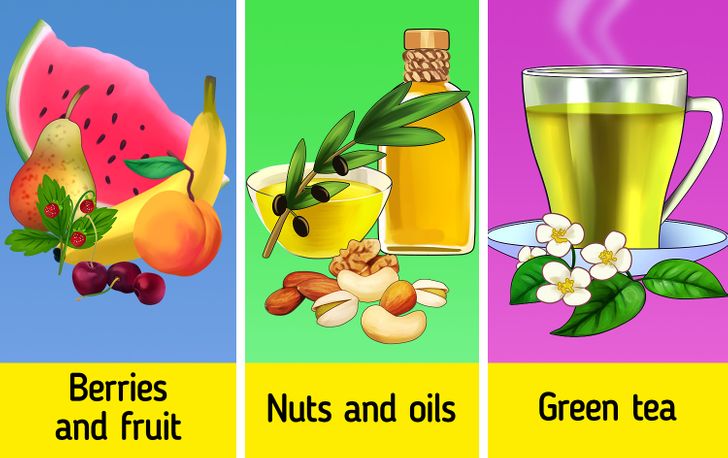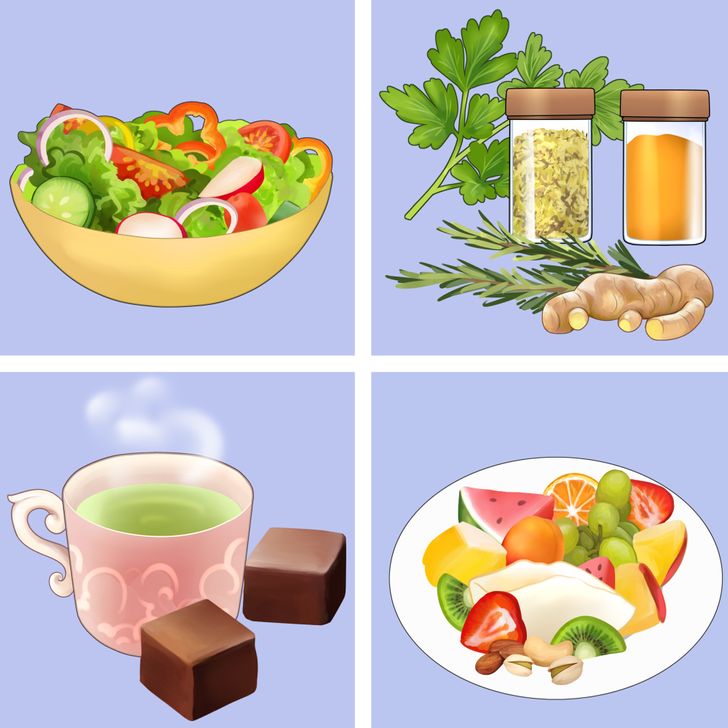What Antioxidants Are and How They Fight With Free Radicals
We oftentimes hear phrases like “This product is rich with antioxidants” or “Our cream contains antioxidants that slow down aging.” Many times, it’s unclear what is hiding behind these words and what type of substances we are dealing with.
5-Minute Crafts is telling you what antioxidants are all about, what types of antioxidants there are, and where we can find them.
What are antioxidants?
Antioxidants are compounds that inhibit the oxidation of a living cell in the body. Oxidation is connected with the production of unstable chemicals — free radicals that damage cell membranes and other structures like proteins, lipids, and DNA.
Our body can cope with a small number of free radicals by itself. But if there are a lot of them, the damage can become irreversible and lead to certain illnesses over time. For example, diseases of the heart and liver, oncology, inflammation of the joints, and damage to nerve cells in the brain. In addition, the effects of free radicals are linked to faster aging.
How do free radicals appear?

Free radicals are atoms that have an unpaired electron. When they get into a human body, they find a suitable electron and take it from the molecule of a living cell. The molecule, which has lost the electron, starts to look for a replacement. A chain reaction starts that provokes the aging of the body and that can lead to the development of illnesses.
A part of free radicals is formed in the process of normal metabolism. For example, when breaking down nutrients to create energy that allows the body to function. But bad habits, exposure to ultraviolet radiation, air pollution, and other factors can also be the causes of their occurrence. That’s when too many free radicals appear and the so-called oxidative stress occurs. It also starts the process of damaging the cells of the body.
Antioxidants neutralize free radicals in 2 ways: by breaking them down to make them harmless or by giving them some of their own electrons. This helps break the chain reaction that can affect other cells in the body.
Where can antioxidants be found?

Most antioxidants are products of plant and animal origin. They suppress the formation of free radicals and help reduce the damage they can cause to the body. This is believed to be one of the reasons a diet, that is rich in vegetables and fruits, is associated with a lower risk of many diseases.
The following sources possess antioxidant activity:
— vitamin А (sweet potatoes, carrots, egg yolks, liver, and milk)
— vitamin C (oranges, black currants, kiwi, mangoes, broccoli, spinach, bell peppers, and strawberries)
— vitamin Е (vegetable oils, avocados, nuts, seeds, and whole grains)
— beta-carotene (pumpkin, mangoes, apricots, carrots, spinach, and parsley)
— lycopene (tomatoes, watermelon, and pink grapefruit)
— lutein (corn and green and leafy vegetables)
— selenium (seafood, offal, lean meat, and whole grains)
— manganese (seafood, lean meat, milk, and nuts)
— flavonoids (tea, green tea, onions, apples, and citrus fruits)
— catechins (leaf tea)
— polyphenols (thyme and oregano)
Antioxidants perform different functions and are not interchangeable, which is why it is so important to have a complete and varied diet and to ensure your intake of antioxidants from food. The effectiveness of taking dietary supplements has not been proven, and moreover, the use of some of them may even harm the body.
How to get more antioxidants with food?

Here are several recommendations:
Add vegetables to salads, casseroles, and as garnishes to main dishes.
Use greenery and spices while cooking. For example: ginger, rosemary, turmeric, parsley, thyme, and oregano have high antioxidant activity.
Opt for green tea as a beverage.
Give your preference to dark chocolate instead of milk chocolate.
Eat sweet berries and fruits instead of desserts. For example: apples, melons, cherries, kiwi, papaya, red grapes, and strawberries.
When having snacks opt for nuts and dried fruit. Prunes and raisins are especially rich in antioxidants.
Which antioxidants are used in cosmetics?
Many cosmetics contain antioxidants as active ingredients. As topical agents, they can interrupt chain reactions, remove free radical intermediates, and interfere with other oxidation reactions. They can protect the skin from the harmful effects of the environment caused by free radicals.
Cosmetics with antioxidants usually contain combinations of extracts from various plants like green tea, rosemary, grape seed, blueberry, tomato, acerola seeds, pine bark, milk thistle, and others. These extracts contain natural antioxidants like polyphenols, flavonoids, carotenoids, and others.
Also, additional elements that possess antioxidant properties can be added to cosmetics. These include vitamin C, vitamin E, coenzyme Q10, and niacinamide.